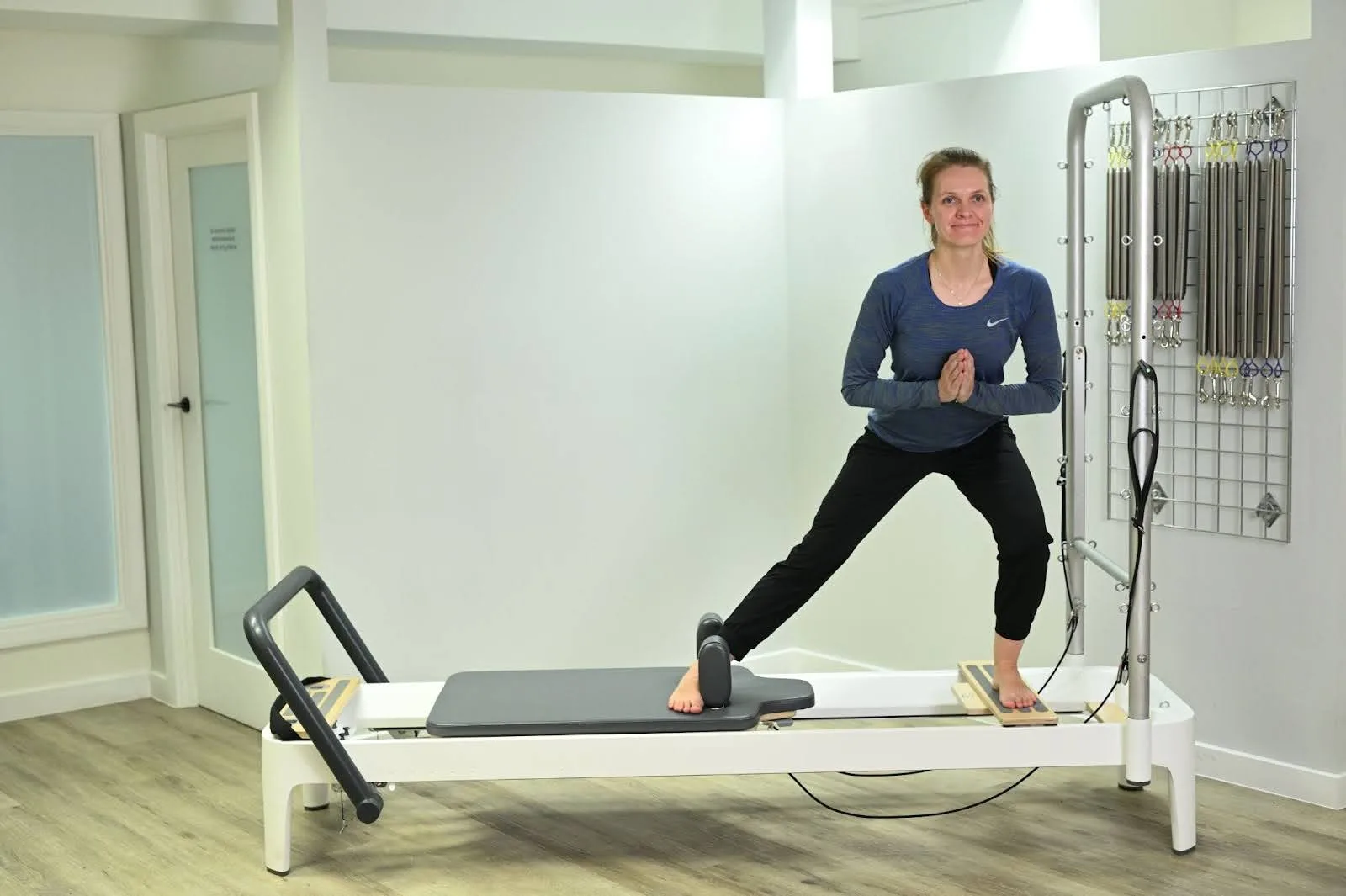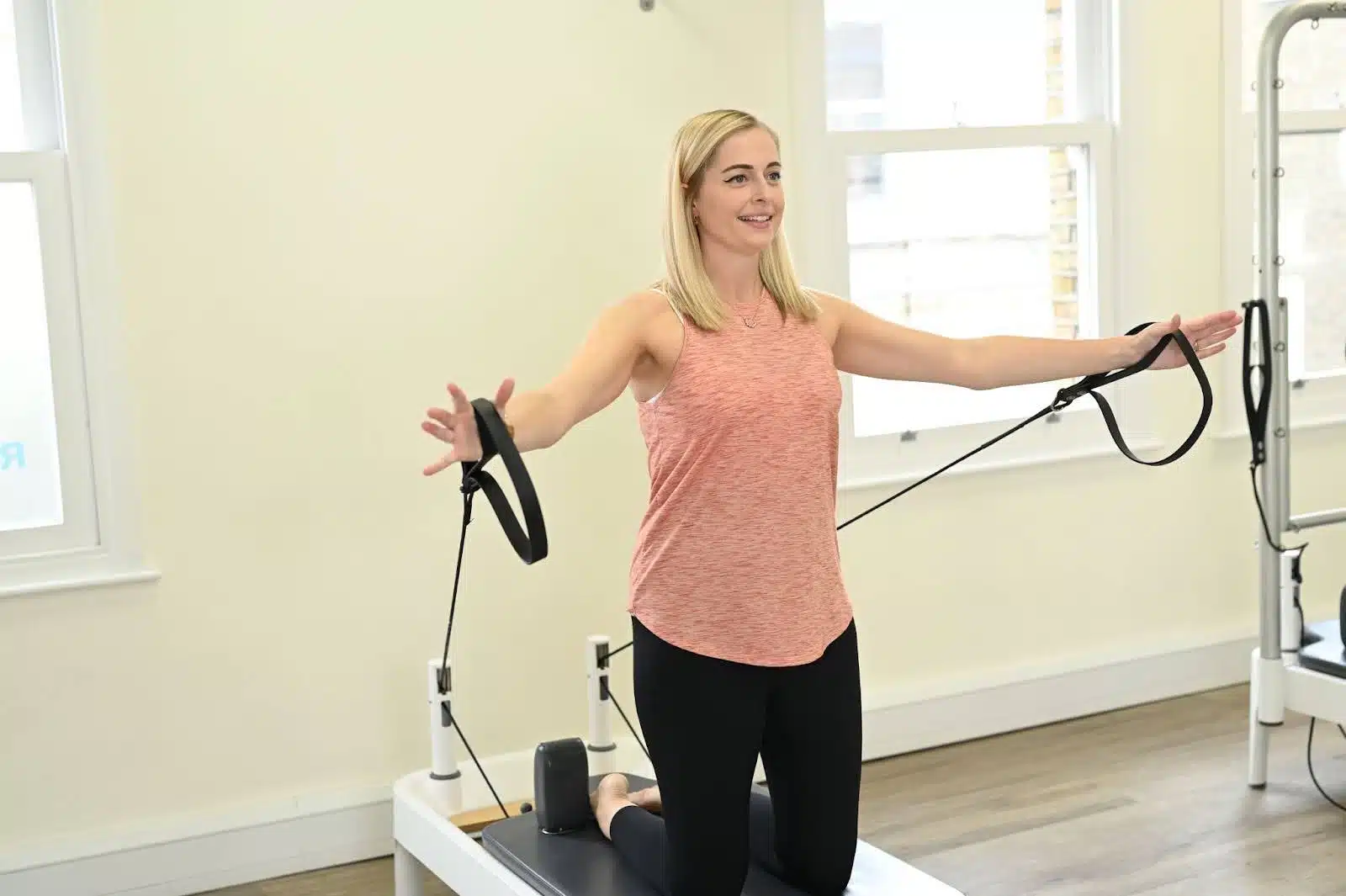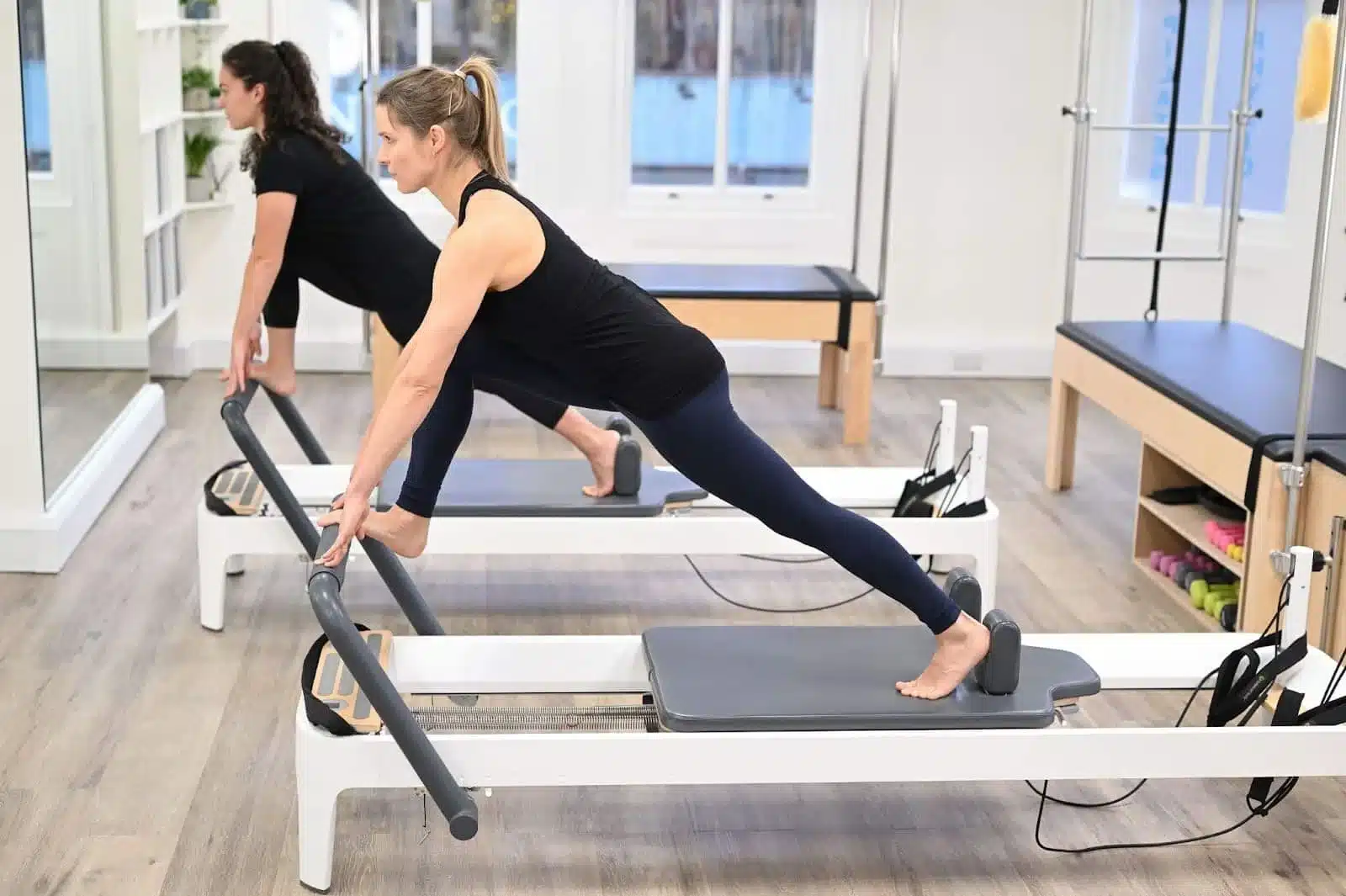Key Contributor: Isabelle Bay, Chartered Physiotherapist
Introduction
Whilst Pilates has been around for almost a century since its creation by Joseph Pilates, one of its key pieces of apparatus – the reformer – has increasingly gained popularity over recent years. Reformer Pilates has been associated with improved core strength, flexibility, posture, balance, and most importantly – excellent strength-building benefits.
It appears that as the rise in Pilates has occurred, there has simultaneously been extensive research that has continued to uncover the endless benefits of strength training for people across the lifespan.
So this begs the question, is reformer Pilates a form of strength training?
Reformer Pilates CAN be a form of strength training, however this does depend on a variety of factors which will be discussed here.
Three key takeaway points
- Strength training involves working muscles against resistance, such as weights or body weight, resulting in improved power and function.
- Reformer Pilates uses specialised springs, plus body weight to provide resistance for Pilates exercises.
- Reformer Pilates can be part of an effective strength training programme, when specifically programmed in a way that promotes strength – for example, by increasing the resistance or volume of exercise.
What is strength training?
Strength training refers to a type of exercise where the muscles are worked against resistance to improve muscle strength, size, power, and endurance. Strength training can use resistance in a variety of ways, including:
- Your own body weight
- Free weights such as dumbbells, barbells, or kettlebells
- Resistance bands
- Weight or cable machines
- Pilates equipment including the Reformer
The American College of Science and Medicine (ACSM) recommends healthy adults should be performing strength training at a dosage of a minimum 2 days a week, with 8-12 repetitions of 8-10 different exercises that target all major muscle groups (2013).
The specific dosage will vary depending on an individual’s experience of strength training (novice, intermediate, or advanced), and on the specific training goal. The number of sets can vary anywhere from 1-5 depending on these factors.
In order for strength training to continue to be effective it requires progressive overload. Progressive overload is when you adapt your strength training so as to stimulate further adaptation in the muscles towards a specific goal- whether this goal be around strength, size (also known as hypertrophy), power, or endurance.
These factors can be enhanced by modifying the dosage of the strength training- whether this be increasing the load (weight), volume (number of repetitions and sets), rest time between sets, or frequency of training (ACSM, 2013).
How does reformer Pilates build strength?
When practicing reformer Pilates, you are able to strength train using the resistance of either the reformer machine or your own body weight.
The key components of the reformer machine are:
- A carriage: flat platform that slides back and forth on wheels. You are able to lie, sit, kneel or stand on this platform depending on the exercise.
- Springs: springs connect the carriage onto the frame and the springs provide varying degrees of resistance which will be represented by different colours (this will vary depending on the brand and model of machine).
- An adjustable footbar: positioned at one end of the machine and is used to push, press or pull, often with feet or hands.
- Straps: there are two straps positioned either side of the headrest of the carriage that are either short in length (typically for hands), or long in length (typically for feet) and are used to push, press or pull against. The straps operate as a pulley system to guide movement and may be used as providing support or resistance depending on the exercise.
- Shoulder rests and headrests are positioned at top of the carriage to promote comfort and alignment of the body.
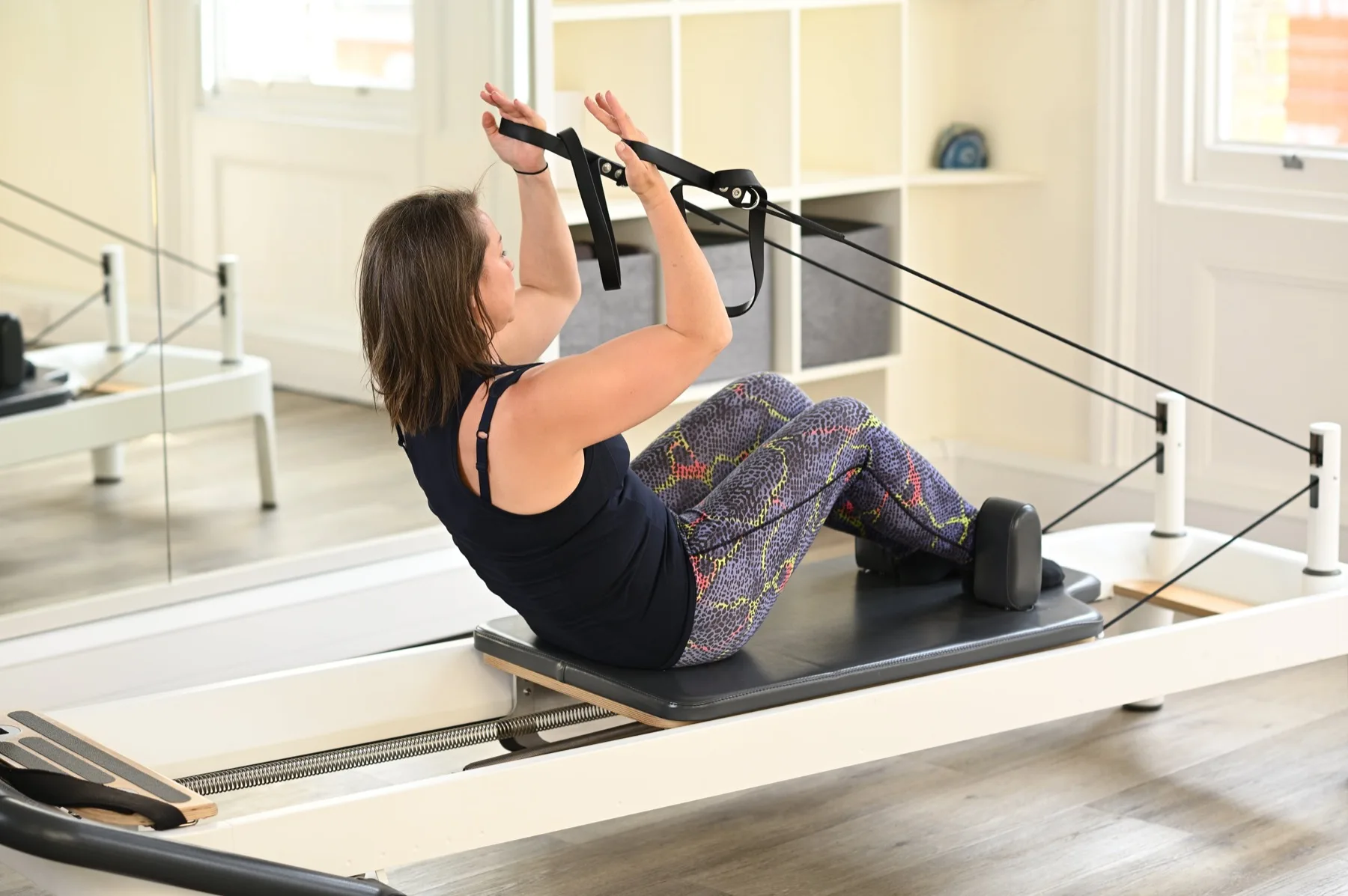
The structure of the reformer allows you to modify exercises to suit the individual, and whilst performing reformer Pilates you can modify the dosage in a number of ways so that you can perform strength training in a safe, low-impact way.
Whilst traditional strength training uses resistance in form of free weights or weight machines, reformer Pilates uses resistance from the springs of the reformer machine as well as your body weight.
The adjustable springs provide the resistance that your body can work against. Just like in traditional strength training, you can increase or decrease the load by changing the spring to progress or regress the exercise. If you are a novice to intermediate strength trainer this is useful for gradually building up your strength.
The difference with springs compared to weights is that springs provide variable resistance. This means that the more you stretch the spring, the more the resistance increases. In turn, this means that the spring will feel heaviest at the end range. In comparison, weights provide the same resistance throughout the full range of motion.
With this mechanism of the springs, the reformer provides an opportunity to enhance joint control at the end range of movement. This can be beneficial for everyone, but is particularly useful for those with joint hypermobility.
Because the reformer moves with spring tension you are constantly controlling motion both when pushing and returning, especially during the return phase. This means the muscle is working both whilst shortening (concentric) AND lengthening (eccentric).
The literature says focusing on eccentric phase training can significantly improve overall strength and may be more beneficial for people with lower exercise tolerance (Ansari et al., 2023). This is due to greater improvements in strength with lower perceived effort when compared with traditional concentric exercise (Ansari et al., 2023).
With the constant control of the carriage the body also has to activate key stabilisers such as the deeper abdominal and spine muscles. This means you are able to develop local muscular endurance of the core which may aid in reducing low back pain, and why Pilates has been recommended by the literature as a non-pharmacological strategy useful for decreasing low back pain (Patti et al., 2023).
The reformer is a unique machine that enables an endless array of exercises that work the full body. A substantial proportion of exercises performed on the reformer are functional movements. Functional movements work multiple muscle groups simultaneously and replicate real-life movements and activities. For example, lunges can be performed in a myriad of ways on the reformer and is a movement pattern we perform everyday in walking, stair-climbing, and running.
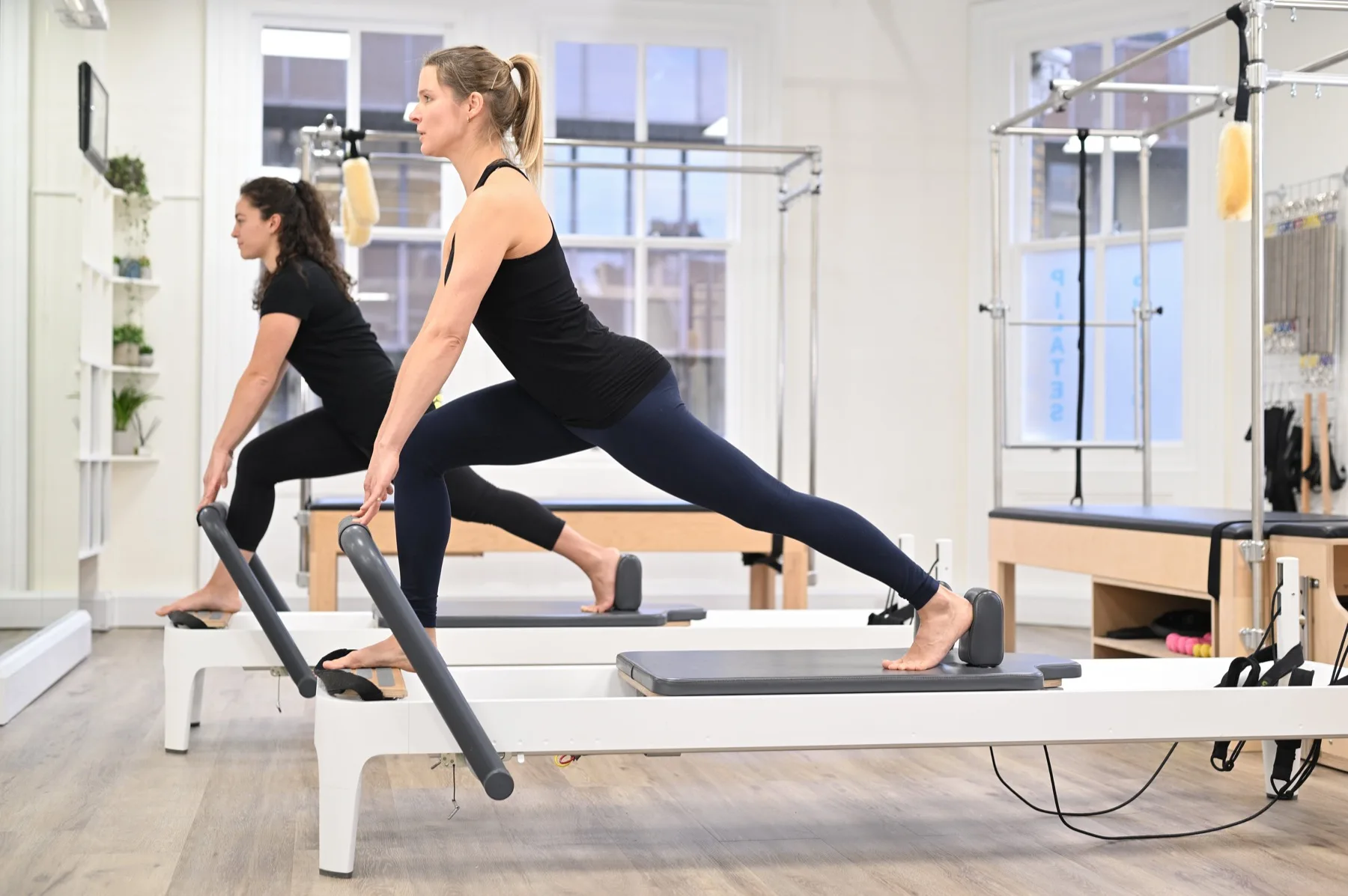
Reformer Pilates vs traditional strength training
| Feature | Reformer Pilates | Traditional Strength Training |
|---|---|---|
| Resistance Type | Springs and bodyweight | Dumbbells, barbells, resistance bands |
| Muscle Engagement | Full-body, core-focused | Targeted muscle groups |
| Impact Level | Low-impact, joint-friendly | Can be high-impact |
| Flexibility Benefits | Yes | Minimal* (Depends, if incorporating eccentric exercise this has been shown to enhance flexibility) |
| Injury Prevention | High | Varies |
Reformer Pilates can be a form of strength training as you can utilize the resistance of the reformer machine and your body weight, however it does depend on a number of factors.
These factors include what your goal for strength training is, what your strength training experience is, what dosage of exercise you are performing with the reformer machine, and what external training you are completing alongside reformer Pilates.
For a novice trainer, reformer Pilates is a perfect way to start your journey into strength training and is in line with the ACSM who recommends machine-based exercise as a safe place to begin (ACSM, 2009). The reformer can lay the foundation for effective movement patterning that can be translated into traditional free weight strength training well.
For a novice strength trainer with the goal of developing pure strength, it is recommended to train with loads 60-70% of what is known as a “One Repetition Maximum” (1RM), for 1-3 sets, and 2-3 days a week (ACSM, 2009). 1RM refers to the maximum amount of weight that you can lift for a single repetition of an exercise, and is the gold standard for selecting the appropriate weight for an exercise based on the desired intensity (Mahaffey, 2024).
However, we don’t recommend trying to see how much your 1RM max is, as this is best done under the supervision of a strength training professional, and best undertaken by advanced strength trainers. A practical way to work out the appropriate load to use is by using the concept of “ reps in reserve”, which refers to how many more repetitions you could perform before technical failure. (Mahaffey, 2024).
Technical failure means that you either lose good form, or you simply can’t move the weight another time. An appropriate amount of reps in reserve for a novice trainer, for example, for a novice trainer would be 2-4
For an intermediate strength trainer the same load is recommended but for multiple sets and up to 3-4 days a week with a mix of machines and free weights for both (ACSM, 2009). This dosage could effectively be achieved on a reformer, in addition to traditional strength training in a home or gym setting with free weights.
However when it comes to developing pure strength for an advanced strength trainer, the recommended load can be between 80-100% of 1RM with multiple sets and up to 4-6 days a week, with a focus on free weights and supplementing with machines as required (ACSM, 2009). As the reformer has a finite amount of load, the advanced trainer may be limited in achieving maximal strength gains with the reformer.
This does not mean reformer Pilates is unsuitable for advanced trainers. The full body is engaged and strengthened with reformer Pilates, and it can be utilised as an important adjunct to their strength training for developing other areas of fitness including mobility, stability, balance and coordination.
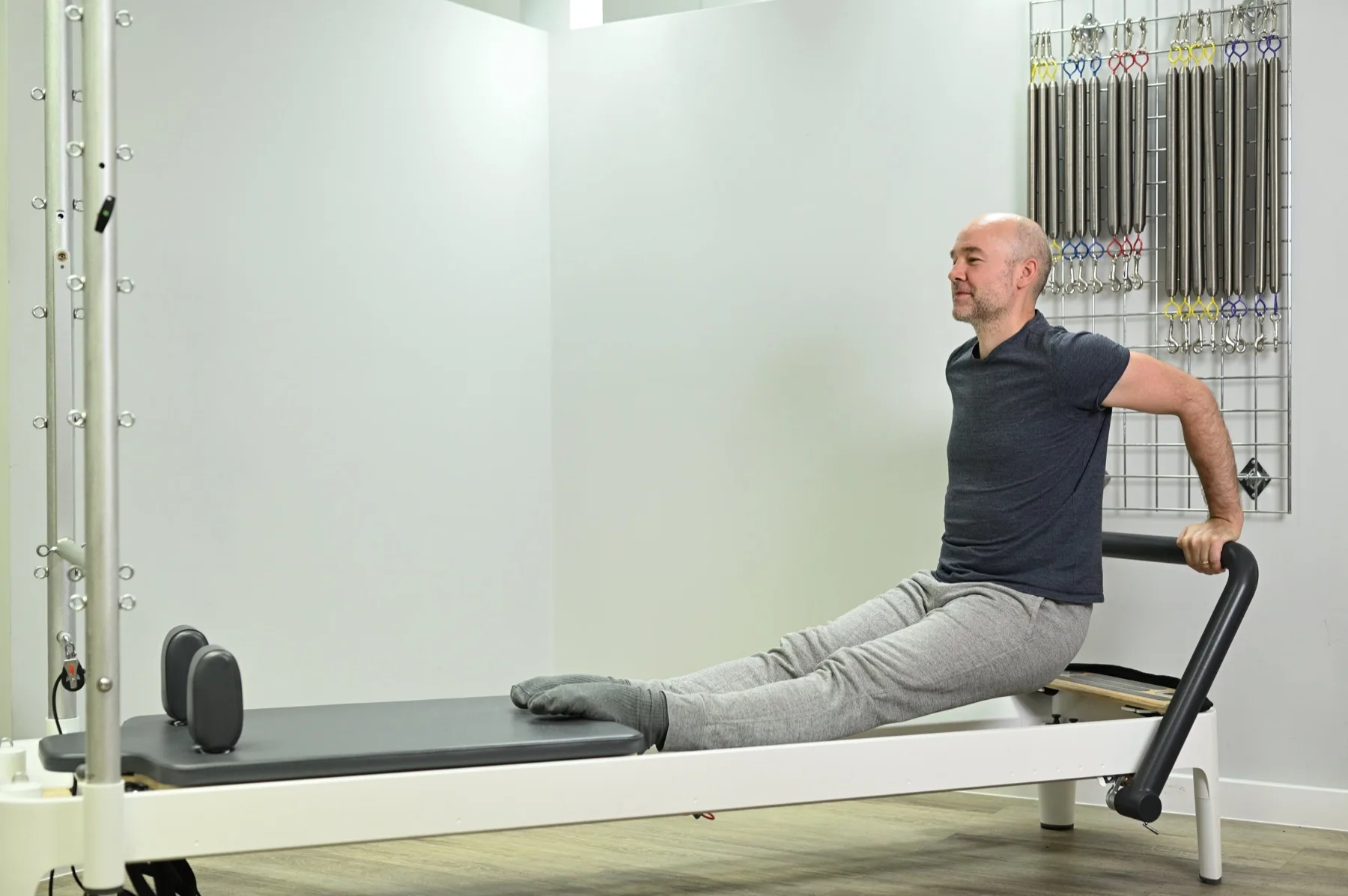
More importantly, the reformer offers unique novel ways for training core strength that helps to encourage flexibility and dynamic movement whilst using the core, as opposed to rigid concentric contractions in a traditional gym setting.
The other factor to consider is that traditional reformer Pilates classes are delivered with only one set of each exercise, at one particular load for any given exercise for the entire class. This is where the importance of the instructor delivering the reformer Pilates class comes in.
Having an instructor with expertise in strength and conditioning principles, such as a physiotherapist, is crucial for ensuring strength progression is adapted to your specific needs.
At Complete Pilates we have a range of instructors, some of whom are physiotherapists, and others who are passionate about strength and conditioning. This means our team has the expertise to tailor the session specific to your strength training needs.
Who is reformer Pilates best for?
With all of this in mind, reformer Pilates is well suited for a wide range of people. It is particularly suitable for novice strength trainers seeking to commence their strength training journey in a safe, supported setting.
It is also suitable for people who struggle with traditional weight training due to joint issues e.g. those with hypermobility spectrum disorders, or who require strength training in a low impact format.
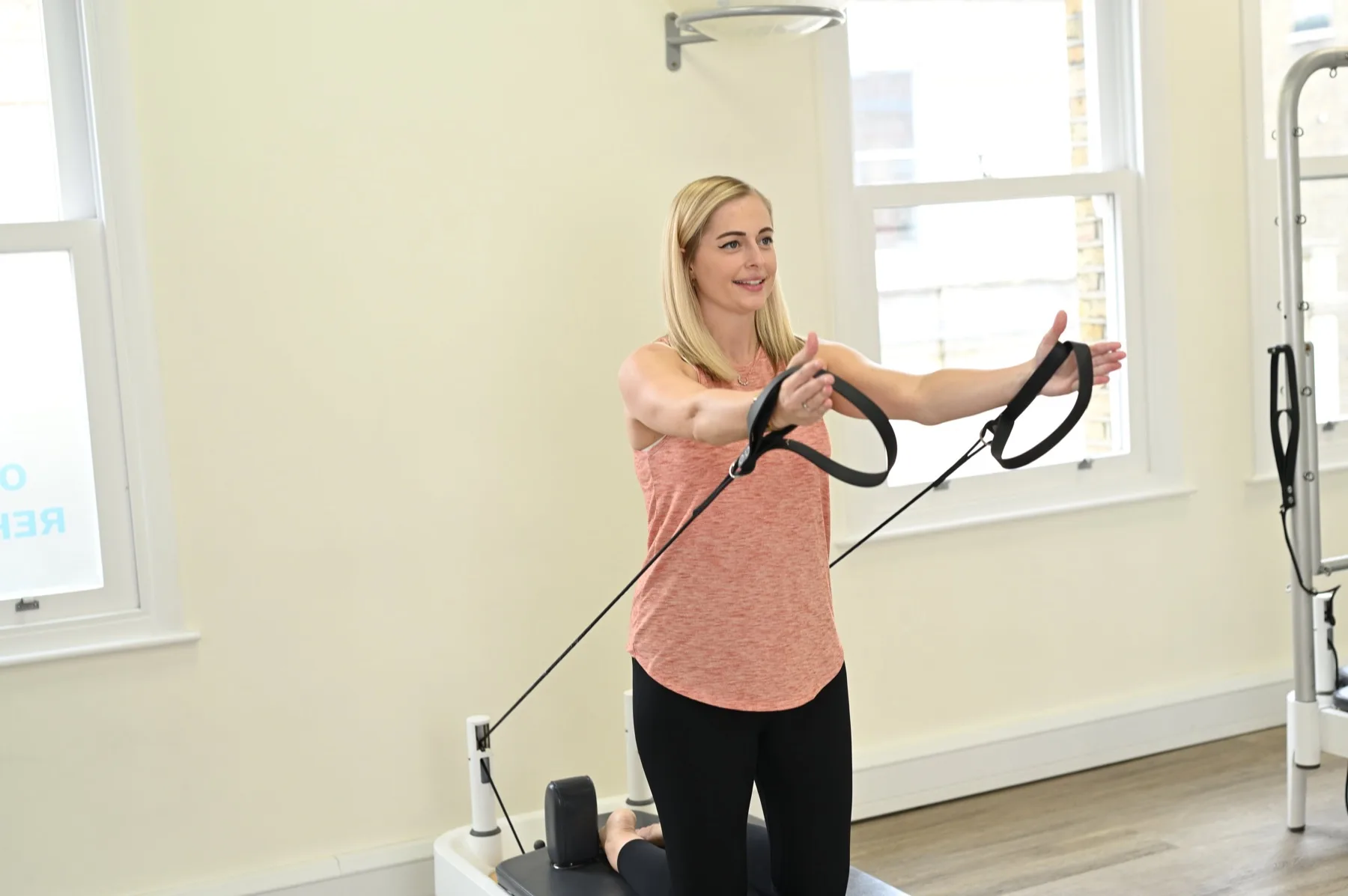
Reformer Pilates also has something to offer those rehabilitating from injury or surgery and wanting to return to everyday life and sport, or those seeking to prevent injury or surgery.
Reformer Pilates is also beneficial for intermediate to advanced strength trainers who want to challenge their fitness in a dynamic and unique way in turn gaining improved flexibility, stability, core strength, balance, and coordination.
FAQs
Does reformer Pilates build muscle?
Yes, when delivered in the appropriate dosage based on the individual’s needs, goals, and capacity over a significant period of time (minimum 6 weeks and up to a year) at a progressive overload.
Does reformer Pilates count as weight lifting?
Yes, reformer Pilates can count as weight lifting as we are using both the reformer machine and a person’s body weight to provide resistance.
Conclusion
Reformer Pilates can be considered strength training as we are utilising the reformer machine and person’s body weight to provide resistance. However, it will depend on the individual’s specific needs, goals and capacity, and whether the dosage of exercise is delivered at the appropriate resistance level, intensity, and consistency.
At Complete, our team of expert physiotherapists and Pilates instructors deliver exceptional and individualised programming of reformer Pilates both within the format of 1:1’s and 3:1’s, ensuring your strength training goals are met.
Visit Complete Pilates in London
Feeling inspired?
If you want to experience the Complete difference and discover the benefits of one-to-one Pilates, book a session at one of our London Pilates studios or online today.
Our physiotherapist-led reformer Pilates studios in Chelsea, our Angel reformer Pilates studio and our reformer Pilates studio in the City, offer a highly tailored approach to your Pilates training, whether your goal is to manage a health condition, rehabilitate from an injury or to improve your strength and fitness.
Get in touch with us via email or contact us on 0203 764 5668 for further information.
Resources
Mahaffey, K. (2024). Reps in reserve. [Online]. Available at https://blog.nasm.org/reps-in-reserve
ACSM. (2013). Resistance training for health and fitness. [Online]. Available at https://www.prescriptiontogetactive.com/static/pdfs/resistance-training-ACSM.pdf
Ansari, M, Hardcastle, S, Myers, S, and Williams, AD. (2023). The Health and Functional Benefits of Eccentric versus Concentric Exercise Training: A Systematic Review and Meta-Analysis. J Sports Sci Med, [online] 22(2), p.288-309. Available at: https://pmc.ncbi.nlm.nih.gov/articles/PMC10244982/#sec1-4 [Accessed 12.05.2025].
Patti, A., Thornton, J. S., Giustino, V., Drid, P., Paoli, A., Schulz, J. M., and Bianco, A. (2023). Effectiveness of Pilates exercise on low back pain: a systematic review with meta-analysis. Disability and Rehabilitation, [online] 46(16), p.3535–3548. Available at https://doi.org/10.1080/09638288.2023.2251404 [Accessed 12.05.2025].
ACSM. (2009). Progression Models in Resistance Training for Healthy Adults. Medicine & Science in Sports & Exercise, [online] 41(3), p.687-708. Available at https://doi.org/10.1249/MSS.0b013e3181915670 [Accessed 12.05.2025]
Education is key:
These blogs are designed to give information to everyone, however, it is important to remember that everyone is different! If you have not seen one of our therapists and have any questions about injuries, what you have read or whether this may be useful to you, please just ask. We are more than happy to help anyone and point you in the right direction. Our biggest belief is that education is key. The more you understand about your injury, illness and movement, the more you are likely to improve.




